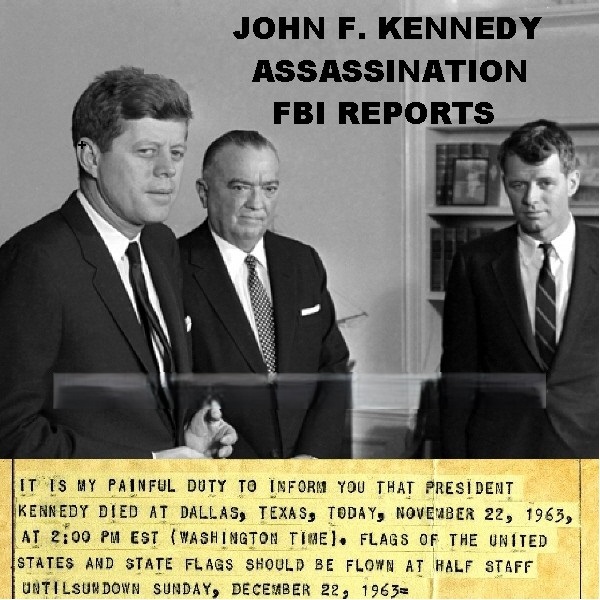
John F. Kennedy Assassination FBI Reports
$19.50
Description
JFK Assassination: Timeline and Key Figures
Detailed Timeline of Main Events
- July 3, 1961: The earliest document in the FBI files dates back to this time, covering Lee Harvey Oswald’s residency in the Soviet Union and FBI interviews with him after his return to the United States.
- November 22, 1963, Approximately 12:29 PM (Local Time): President John F. Kennedy is assassinated in Dealey Plaza, Dallas, Texas. He was traveling in a motorcade from Love Field to the Trade Mart to address a luncheon.
- Texas Governor John B. Connally, who was also in the motorcade, was wounded.
- Post-Assassination (November 22-24, 1963): The FBI begins its extensive investigation into the assassination of President Kennedy.
- Lee Harvey Oswald is identified and charged with the assassination of President Kennedy.
- FBI investigates Oswald’s background, activities, and associates.
- FBI investigates miscellaneous threats made against Kennedy.
- FBI investigates allegations of persons other than Oswald being involved.
- FBI compiles reports on “Hoaxes, False Reports, and Irresponsible Reporting” related to the assassination.
- November 24, 1963: Lee Harvey Oswald is shot and killed by Jack Ruby before a trial can take place.
- The FBI initiates an investigation into the killing of Lee Harvey Oswald.
- FBI investigates Jack Ruby’s background, activities, and potential motives.
- Less than a Month After the Assassination (Late December 1963): Mark Lane publishes an article in the National Guardian questioning the initial information about the assassination.
- 1964: The FBI submits a comprehensive report titled “Investigation of Assassination of President John F. Kennedy” to the Warren Commission.
- The report details the assassination, the identification of Oswald as the assassin, and the evidence supporting this conclusion.
- The report also covers the FBI’s knowledge of Oswald prior to the assassination and the investigation into his background and activities afterward.
- The report includes exhibits of evidence linking Oswald to the assassination, including his contacts with the Soviets and the Communist Party, an autobiography, and details related to the assassination weapon.
- A section of the report specifically addresses the killing of Lee Harvey Oswald and provides information concerning Jack Ruby.
- 1966: Mark Lane publishes his book, “Rush to Judgment,” further criticizing the official narrative of the assassination.
- 1968: Mark Lane publishes “A Citizen’s Dissent: Mark Lane Replies to the Defenders of the Warren Report.”
- 1979: The House Select Committee on Assassinations (HSCA) concludes that President John F. Kennedy was probably assassinated as a result of a conspiracy, based on disputed acoustic evidence, differing from the FBI and Warren Commission’s lone assassin conclusion.
- 1991: Mark Lane publishes “Plausible Denial: Was the CIA Involved in the Assassination of JFK?”
- 2011: Mark Lane publishes “Last Word: My Indictment of the CIA in the Murder of JFK.”
Cast of Characters
- John Fitzgerald Kennedy: The 35th President of the United States. He was assassinated on November 22, 1963, in Dallas, Texas.
- Jacqueline Kennedy: John F. Kennedy’s wife, who was with him in the motorcade when he was assassinated.
- Lyndon B. Johnson: The Vice President of the United States at the time of the assassination. He was also in the motorcade and became President following Kennedy’s death.
- Mrs. Johnson: Lyndon B. Johnson’s wife, who was with him in the motorcade.
- John B. Connally: The Governor of Texas at the time of the assassination. He was riding in the same car as President Kennedy and was wounded.
- Nellie Connally: John B. Connally’s wife, who was also in the car when President Kennedy was assassinated.
- Lee Harvey Oswald: Identified by the FBI and the Warren Commission as the assassin of President John F. Kennedy. He was charged with the crime but was killed two days later by Jack Ruby before a trial. The FBI files contain extensive information about his background, activities (including his time in the Soviet Union and a trip to Mexico), and alleged motives.
- Jack Ruby: A Dallas nightclub owner who shot and killed Lee Harvey Oswald on November 24, 1963, while Oswald was in police custody. The FBI investigated Ruby’s background, his actions following the assassination, and his claim of emotional distress.
- Mark Lane: An attorney who became a prominent critic of the Warren Commission’s conclusion that Lee Harvey Oswald was the lone assassin. He published several books questioning the official narrative and suggesting a conspiracy. The FBI files include reports covering his activities and publications related to the assassination.
- Warren Commission: A presidential commission established to investigate the assassination of President John F. Kennedy. The FBI submitted a comprehensive report to this commission, concluding that Oswald was the lone assassin.
- House Select Committee on Assassinations (HSCA): A committee of the U.S. House of Representatives that reinvestigated the assassinations of John F. Kennedy and Martin Luther King Jr. In 1979, the HSCA concluded that President Kennedy was probably assassinated as a result of a conspiracy, based on disputed acoustic evidence.
- John Abt: An attorney who, on behalf of Arnold Johnson, turned over letters written by Lee Harvey Oswald to the FBI.
- Arnold Johnson: Mentioned in connection with John Abt and letters written by Lee Harvey Oswald, suggesting a connection to political or activist circles Oswald was involved with.
- Gus Hall: Identified in a letter to Oswald as being associated with the Benjamin J. Davis Defense Committee, indicating Oswald’s potential involvement or interest in Communist-related causes.
- Benjamin J. Davis: The name of a defense committee that sent a letter to Oswald, suggesting Oswald had some connection to this group, likely related to Communist or civil rights activism.
- “The Worker”: The sender of a letter to Oswald in December 1962, likely representing a left-leaning or labor-related publication or organization.
- Socialist Workers Party: An organization that sent letters to Oswald in November 1962 and March 1963, indicating Oswald’s potential interest in or engagement with socialist political groups.
- Bob Chester: The sender of a letter to Oswald, the context of which isn’t specified but suggests a personal or possibly political connection.
- Fair Play for Cuba Committee: An organization that sent letters and a membership card to Oswald in May 1963, indicating his active involvement or expressed support for this group advocating for Cuba.
- Communist Party, U.S.A.: An organization that sent a letter to Oswald, further highlighting his potential affiliations or interest in communist political ideologies.
- UPI Reporter: Mentioned in an account by Oswald of an interview, indicating Oswald’s interactions with the media.
John F. Kennedy Assassination FBI Reports
6,605 pages of investigative reports produced by the Federal Bureau of Investigation in the days and months following the death of President Kennedy on November 22, 1963, copied from material held at the National Archives and Records .
John Fitzgerald Kennedy, the 35th President of the United States, was assassinated in Dealey Plaza, Dallas, Texas, at approximately 12:29 PM local time on November 22, 1963. At the time, the President was en route from Love Field to the Trade Mart in Dallas to address a luncheon sponsored by several civic groups. Among those in the motorcade with the President were his wife Jacqueline, Vice President Lyndon B. Johnson and Mrs. Johnson, and Texas Governor John B. Connally and his wife Nellie.
Lee Harvey Oswald was charged with the crime but was shot and killed two days later by Jack Ruby before a trial could take place. The FBI, the Warren Commission, and the House Select Committee on Assassinations (HSCA) officially concluded that Oswald was the lone assassin, with the HSCA in 1979 concluding that President John F. Kennedy was probably assassinated as a result of a conspiracy based on disputed acoustic evidence.
he earliest document in this set is dated July 3, 1961, nearly 2 1/2 years before the assassination of President Kennedy. These early files cover Oswald’s residency in the Soviet Union and FBI interviews with Oswald after his return to the United States. The bulk of the material was created after the assassination of President Kennedy.
The documents include long form reports on Oswald and Jack Ruby. Individual reports address Oswald in Russia, Oswald’s trip to Mexico, miscellaneous threats made against Kennedy, investigations into allegations of persons other than Oswald, and a report titled, “Hoaxes, False Reports, and Irresponsible Reporting.”
Two reports cover the attorney Mark Lane. Less than a month after the assassination, Lane published an article in the National Guardian questioning the initial information about the assassination. Lane went on to become a leading critic of the conclusions of the Warren Commission and wrote several books including, Rush to Judgment (1966), A Citizen’s Dissent: Mark Lane Replies to the Defenders of the Warren Report (1968), Plausible Denial: Was the CIA Involved in the Assassination of JFK? (1991), and Last Word: My Indictment of the CIA in the Murder of JFK. (2011).
The files include a comprehensive report submitted to the Warren
Commission titled, “Investigation of Assassination of President John F. Kennedy.”
The first section of this report covers the assassination of the President and the identification of Oswald as his slayer. The second section presents the evidence the FBI described as conclusively showing that Oswald did assassinate the President. The third section addresses what the FBI knew about Oswald prior to the assassination; and the results of the FBI’s investigation of Oswald’s background, activities, associates, et cetera, subsequent to the assassination. The report includes exhibits of evidence tying Oswald with the assassination of the President and documents relative to Oswald’s contacts with the Soviets and the Communist Party. The exhibits include an autobiography by Oswald in his handwriting. The last section covers the investigation of the killing of Lee Harvey Oswald.
The contents of the report “Investigation of Assassination of President John F. Kennedy”:
Section I: The Assassination: Assassin in Building, Patrolman Tippit Killed
Section II: The Evidence: A. Events Prior to the Assassination, B. Events Following The Assassination, C. Oswald’s Apprehension, D. Interview of Assassin, E. The Assassination Weapon, F. Other Evidence, G. Prior Similar Act, H. Lee Harvey Oswald, Before Assassination of President Kennedy, After Assassination of President Kennedy
Exhibits: Map of Portion of Downtown Dallas; Texas School Book Depository Building; Blanket Found in Oswald’s Garage; Brown Wrapping Paper Bag Found Near Window; Latent Left Index Fingerprint of Oswald on Brown Paper Bag; Latent Right Palm Print of Oswald on Brown Paper Bag; Employees’ Lunchroom’ Revolver Used by Oswald to Shoot Officer Tippit; Photograph of Oswald with Side Ann and Rifle; Fair Play for Cuba Committee Card Carried by Oswald’ Assassination Weapon; 1Diagram of Sixth Floor; Blanket, Paper Bag, and Rifle (Relative Size); Order Blank Showing Sale of Rifle; Oswald’s Passport Application; Order for Rifle; Money Order for Rifle; Post Office Box Application; Oswald’s Shirt; Bullet from Stretcher; Bullet Fragments; Oswald’s Latent Palm Print on Rifle; Oswald’s Right Palm Print on Cardboard Carton; Oswald’s Fingerprint on Cardboard Carton; Oswald’s Left Palm Print on Cardboard Carton; Enlargement of Film Showing Window from Which Shots Were Fired; Map Found in Oswald’s Effects; Undated Note in Russian Language Found by Mrs. Oswald; Letter from Oswald to U.S. Marine Corps – March 22, 1963; Excerpt – State Department Manual; Oswald’s Membership Card – Fair Play for Cuba Committee; “Historic Diary” Prepared by Oswald; Notes of Oswald on Stationary of Holland-American Line; Manuscript Prepared by Oswald; Draft of Speech Prepared by Oswald; Handwritten Notes for Speech’ Handwritten Notes re: Political Systems; Notes on Biographical Data of Oswald’ Questions and Answers Pertaining to Oswald’s Trip to USSR; Handprinted Account of Oswald’s Visit to American Embassy; Account of Interview with UPI Reporter; Account of Amorous Affairs in USSR; Letter to Oswald from Gus Hall – Benjamin J. Davis Defense Committee; Letter to Oswald from “The Worker” – December 19: 1962; Letter to Oswald from Socialist Workers Party – November 5: 1962; Letter to Oswald from Bob Chester; Letter to Oswald from Socialist Workers Party – March 27: 1963; Letter to Oswald from Fair Play for Cuba Committee – May 22: 1963; Letter to Oswald from the Communist Party, U.S.A.; Letter to Oswald from Arnold Johnson; Letter Dated May 29, 1963 from Fair Play for Cuba Committee; Oswald’s Letters Turned Over to FBI by John Abt on Behalf of Arnold Johnson; Soviet Embassy File re: Oswald; Autobiography of Oswald in His Handwriting.
Investigation of Killing of Lee Harvey Oswald:
I. The Killing of Lee Harvey Oswald: A. Oswald’s Arrest, B. Removal Plans Publicized, C. Removal Steps Initiated, D. Oswald Killed, E. Assailant Identified.
II. Information Concerning Ruby: A. Early Years, B. Friend Murdered, C. Military Service, D. Chicago to Dallas, E. Career as Night Club Operator,
F. Personal Characteristics, G. Relations with Dallas Police, H. Travel, I. Political Interests, J. No Relationship with Oswald
III. FBI Interview with Ruby: A. Movements Following Assassination of
President Kennedy, B. Claim of Emotional Pressure, C. Took Gun with Him, D. Concealed Means of Entry, E. Claims Reasoning Beclouded
IV. Ruby’s Whereabouts November 22-24, 1963
V. Purchase of Gun and Arrest Record
VI. Investigation Under Civil Rights Statutes: A. Basis for Investigation, B. Scope of Investigation, C. Anonymous Telephone Warnings, D. Transfer Plans, E. Armored Truck a Decoy, F. Flanking Guards, G. Basement Area Checked, H. Pertinent Areas Secured, I. Transfer Security Plans, J. Orders to Check Identification Passes, K. Area Searches, L. Large Crowd Present, M. Entrance of Ruby, N. Ruby’s Comments
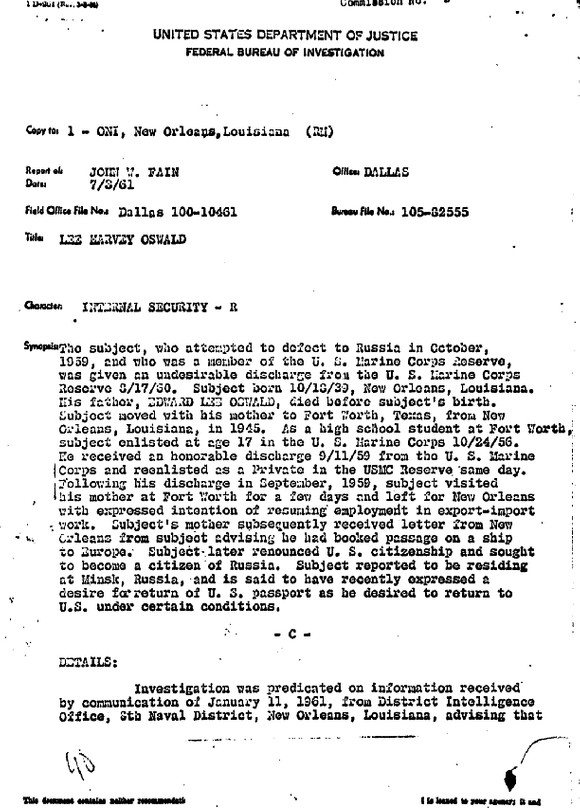
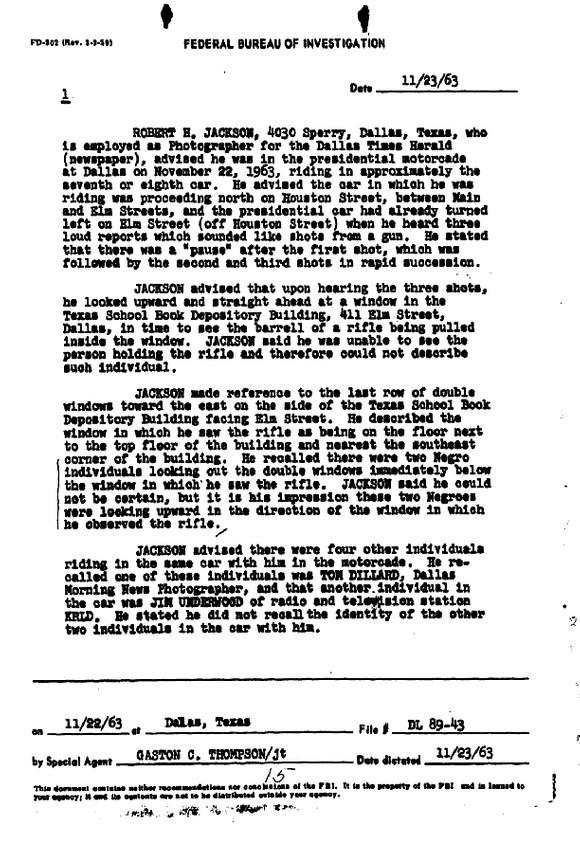
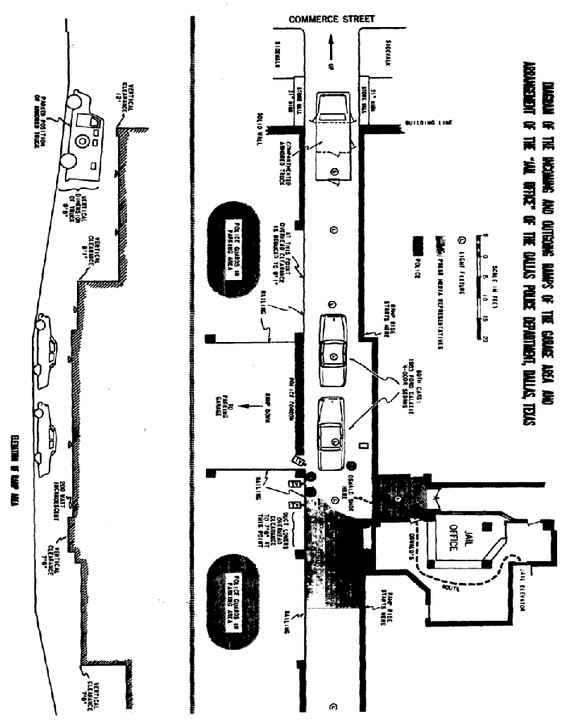

Related products
-
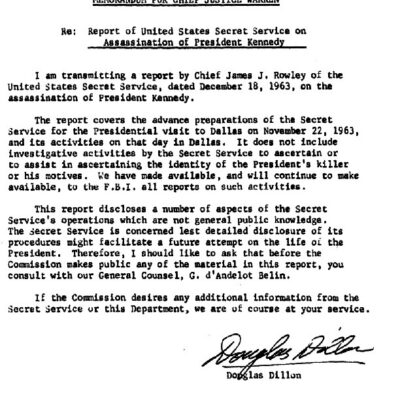
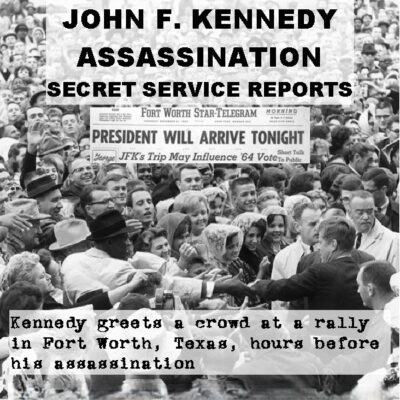
John F. Kennedy Assassination Secret Service Reports
$19.50 Add to Cart -
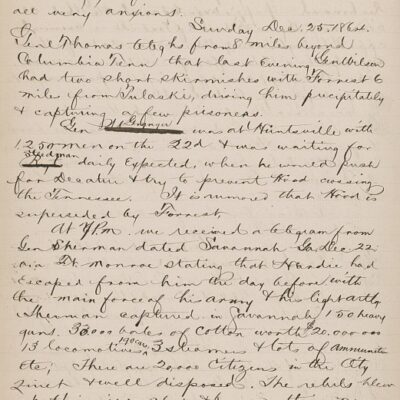
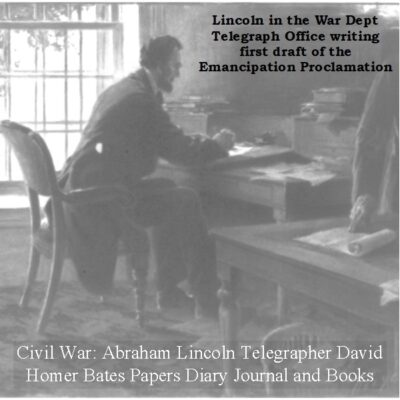
Abraham Lincoln’s Telegrapher David Homer Bates: Papers, Diary, and Books
$19.50 Add to Cart -
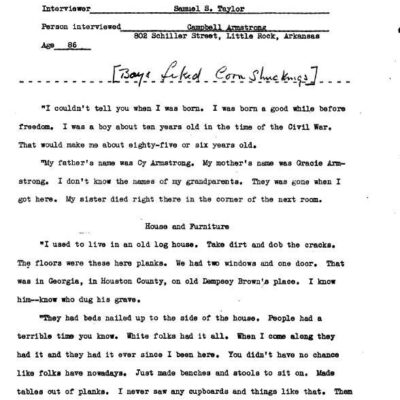
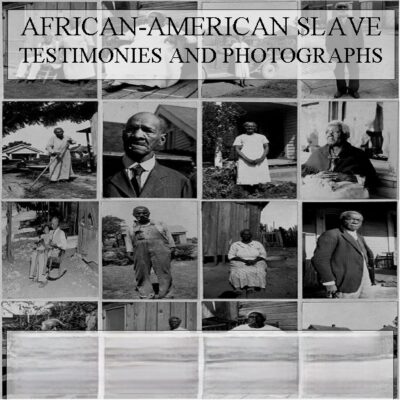
African American Slave Testimonies and Photographs
$19.50 Add to Cart -

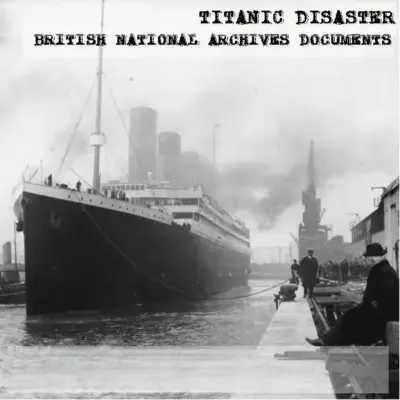
Titanic Disaster British National Archives Documents
$19.50 Add to Cart